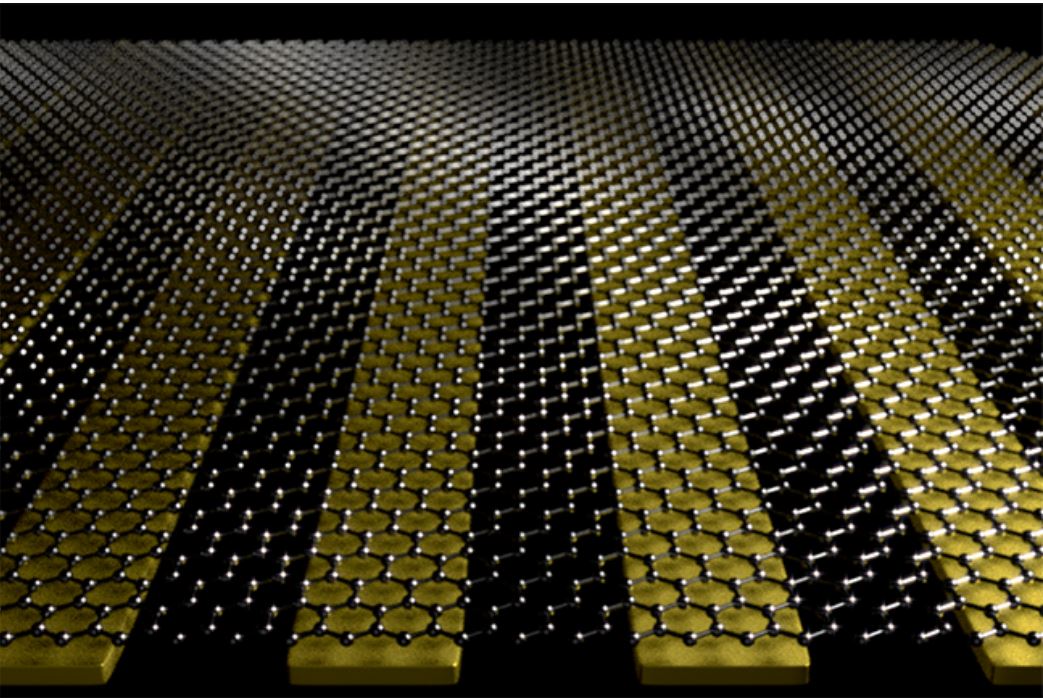
Researchers have created a new graphene-based device which they say is the first step toward ultrasensitive biosensors. The biosensors would detect diseases at the molecular level, and with near-perfect accuracy.
The research team, from the University of Minnesota and IBM T. J. Watson Research Center, wrote about the work in the prestigious journal Nature Nanotechnology (citation below). The authors were In-Ho Lee, Daehan Yoo, Phaedon Avouris, Tony Low, and Sang-Hyun Oh.
Ultrasensitive biosensors that probed protein structures could improve the depth of diagnosis significantly for several diseases. The biosensors would be useful for diagnosing animals as well as humans.
Medical professionals could use the biosensors for diagnosing chronic wasting disease and Alzheimer’s disease. It could also be used for mad cow disease. All these disorders are related to protein misfolding.
The biosensors might also lead to better technologies for creating new medications.
Ultrasensitive biosensors – detecting tiny protein molecules
Lead researcher, Sang-Hyun Oh, a Professor at Minnesota’s Department of Electrical and Computer Engineering, said:
“In order to detect and treat many diseases we need to detect protein molecules at very small amounts and understand their structure.”
“Currently, there are many technical challenges with that process. We hope that our device using graphene and a unique manufacturing process will provide the fundamental research that can help overcome those challenges.”
Graphene, the world’s toughest, lightest, and thinnest material, was discovered just over a decade ago. Researchers have been praising its amazing properties. Graphene shows promise for many different applications, including creating better disease-detecting sensors.
Challenge of creating ultrasensitive biosensors using graphene
Researchers have tried to create ultrasensitive biosensors using graphene. However, its one-atom thickness means that it doesn’t interact with light efficiently when the light shines through it.
The absorption of light and its conversion to local electric fields is crucial. Especially when trying to detect a tiny sample of molecules to diagnose diseases.
Previous studies using similar graphene nanostructures only achieved a light absorption rate of less than 10%.
Combining graphene with ribbons of gold
In this latest study, scientists combined graphene with nano-sized gold ribbons. Using template stripping, they created an ultra-flat base layer surface for the graphene.
The researchers then used the energy from the light to generate plasmons (oscillations of free electrons) in the graphene. We can think of them like waves or ripples spreading through a sea of electrons. These waves can grow to become giant tidal waves of local electric fields.
According to a University of Minnesota press release:
“By shining light on the single-atom-thick graphene layer device, they were able to create a plasmon wave with unprecedented efficiency at a near-perfect 94 percent light absorption into “tidal waves” of electric field.”
“When they inserted protein molecules between the graphene and metal ribbons, they were able to harness enough energy to view single layers of protein molecules.”
94% light absorption
Prof. Oh, who holds the Sanford P. Bordeau Chair in Electrical Engineering at the University of Minnesota, said:
“Our computer simulations showed that this novel approach would work, but we were still a little surprised when we achieved the 94 percent light absorption in real devices.”
“Realizing an ideal from a computer simulation has so many challenges. Everything has to be so high quality and atomically flat. The fact that we could obtain such good agreement between theory and experiment was quite surprising and exciting.”
Citation
“Graphene acoustic plasmon resonator for ultrasensitive infrared spectroscopy,” In-Ho Lee, Daehan Yoo, Phaedon Avouris, Tony Low, and Sang-Hyun Oh. Nature Nanotechnology (2019). DOI: https://doi.org/10.1038/s41565-019-0363-8.

